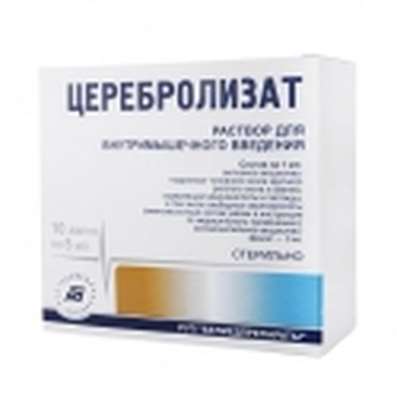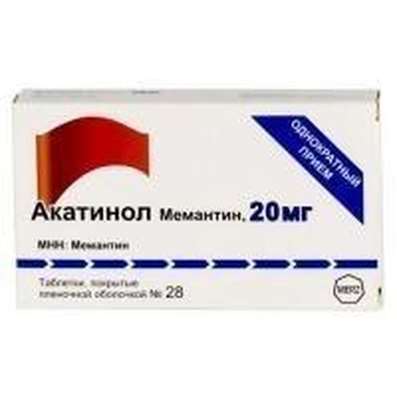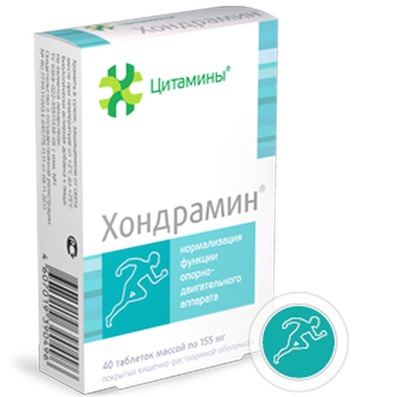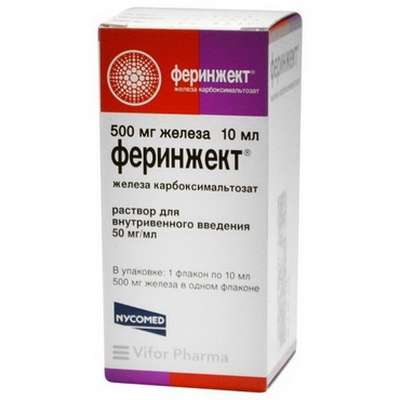Instruction for use: Diethyl ether
I want this, give me price
Latin name: Aether diaethylicus (genus. Aetheris diaethylici)
Chemical name
1,1-Oxy-bis-ethane
Gross formula
C4H10O
Pharmacological group:
Anesthetic means
The nosological classification (ICD-10)
Y56.7 Adverse reactions in the therapeutic use of medications used topically in dental practice
Z100.0 * Anesthesiology and premedication: Abdominal surgery; Adenomectomy; Amputation; Angioplasty of the coronary arteries; Carotid artery angioplasty; Antiseptic treatment of skin in wounds; Antiseptic treatment of hands; Appendectomy; Atheroctomy; Balloon coronary angioplasty; Vaginal hysterectomy; Venous bypass; Interventions on the vagina and cervix; Interventions on the bladder; Interference in the oral cavity; Reconstructive-reconstructive operations; Hand hygiene of medical personnel; Gynecological Surgery; Gynecological interventions; Gynecological operations; Hypovolemic shock during surgery; Disinfection of purulent wounds; Disinfection of the edges of wounds; Diagnostic Interventions; Diagnostic procedures; Diathermocoagulation of the cervix; Long-term surgeries; Replacement of fistulous catheters; Infection in orthopedic surgical interventions; Artificial heart valve; Kistectomy; Short-term outpatient surgery; Short-term operations; Short-term surgical procedures; Cryotyreotomy; Blood loss during surgical interventions; Bleeding during surgery and in the postoperative period; Laser coagulation Laserocoagulation; Laser retinopathy of the retina; Laparoscopy; Laparoscopy in gynecology; Likvornaya fistula; Small gynecological operations; Small surgical interventions; Mastectomy and subsequent plastic surgery; Mediastinotomy; Microsurgical operations on the ear; Mukinging operations; Suturing; Minor surgery; Neurosurgical operation; Eclipse of the eyeball in ophthalmic surgery; Orchiectomy; Pancreatectomy; Pericardectomy; The rehabilitation period after surgical operations; Reconvalence after surgical intervention; Percutaneous transluminal coronary angioplasty; Pleural Thoracocentesis; Pneumonia postoperative and post traumatic; Preparing for surgical procedures; Preparing for a surgical operation; Preparation of the surgeon's arms before surgery; Preparation of the colon for surgical interventions; Postoperative aspiration pneumonia in neurosurgical and thoracic operations; Postoperative nausea; Postoperative hemorrhage; Postoperative granuloma; Postoperative shock; Early postoperative period; Myocardial revascularization; Resection of the apex of the tooth root; Resection of the stomach; Bowel resection; Resection of the uterus; Liver resection; Small bowel resection; Resection of a part of the stomach; Reocclusion of the operated vessel; Gluing of tissues during surgical interventions; Suture removal; Condition after eye surgery; Condition after surgery in the nasal cavity; Condition after gastrectomy; Condition after resection of the small intestine; Condition after tonsillectomy; Condition after removal of duodenum; Condition after phlebectomy; Vascular Surgery; Splenectomy; Sterilization of surgical instrument; Sterilization of surgical instruments; Sternotomy; Dental surgery; Dental intervention on periodontal tissues; Strumectomy; Tonsillectomy; Thoracic surgery; Total gastrectomy; Transdermal intravascular coronary angioplasty; Transurethral resection; Turbinectomy; Removal of a tooth; Cataract removal; Removing Cysts; Removal of tonsils; Removal of myoma; Removal of mobile milk teeth; Removal of polyps; Removal of a broken tooth; Removal of the uterus; Removal of seams; Urethrotomy; Fistula of the luminal ducts; Frontoetmoidogamotomy; Surgical infection; Surgical treatment of chronic ulcers of extremities; Surgery; Surgery in the anus; Surgery on the large intestine; Surgical practice; Surgical procedure; Surgical interventions; Surgical interventions on the digestive tract; Surgical interventions on the urinary tract; Surgical interventions on the urinary system; Surgical interventions on the genitourinary system; Surgical intervention on the heart; Surgical procedures; Surgical operations; Surgical operations on veins; Surgical intervention; Vascular Surgery; Surgical treatment of thromboses; Cholecystectomy; Partial resection of the stomach; Extraperitoneal hysterectomy; Percutaneous transluminal coronary angioplasty; Percutaneous transluminal angioplasty; Coronary artery bypass grafting; Extirpation of the tooth; Extirpation of infant teeth; Extirpation of pulp; Extracorporeal circulation; Extraction of the tooth; Extraction of teeth; Extraction of cataracts; Electrocoagulation; Endourological interventions; Episiotomy; Ethmoidotomy; Complications after tooth extraction
CAS code
60-29-7
Characteristic of the substance Diethyl ether
Colorless, transparent, very mobile, volatile liquid with a peculiar smell and burning taste. The ether for anesthesia contains 96-98% of diethyl ether. The density of the ether for anesthesia is 0.713-0.714, the ester of medical 0.714 is 0.717, the boiling point is 34-35 ° C and 34-36 ° C, respectively. Upon evaporation of 1 ml of ether, 230 ml of steam are formed for anesthesia; the vapor density of ether for anesthesia 2.6, the relative molecular weight 74. It decomposes under the influence of light, heat, air and moisture with the formation of toxic aldehydes, peroxides and ketones irritating the respiratory tract. Solubility in water 1:12. It is mixed with alcohol, benzene, essential and fatty oils in all proportions. It is easily ignited, incl. couples; in a certain ratio with oxygen, air and dinitrogen oxide ether pairs for anesthesia are explosive.
Pharmacology
Pharmacological action - anesthesia.
Nonspecifically interacts with the membranes of neurons, mainly - with bilayer lipid membranes of the axons of the brain, oblong and spinal cord, reversibly modifies their ultrastructure and functions. Oppresses the central nervous system: blocks the synaptic transmission of excitation (mainly afferent impulses), functionally disintegrates the cortical-subcortical interactions while maintaining the activity of bulbar centers. Causes distinctly expressed "classical" stages of anesthesia - analgesia, excitation, surgical anesthesia with 3 levels (superficial, medium, deep) and characteristic signs: lack of consciousness and all kinds of sensitivity, inhibition of reflex reactions and relaxation of skeletal muscles.
In the case of premedication and against the background of other inhaled or non-inhaling general anesthetics, the classical narcosis pattern changes significantly. At the stage of analgesia lowers the functional activity of cortical neurons, causes an amnestic effect. In the stage of excitation, it depresses the cerebral cortex, turns off the subordinate mechanisms that control the state of the subcortical structures (mainly the midbrain). Increase in activity of subcortical formations is manifested by psychomotor excitation, variability of respiration, blood pressure, pulse, etc.). This stage is more pronounced in adults than in children, less (or absent) - against a background of premedication and basic anesthesia. Irritant to mucous membranes, incl. oral cavity, increases the secretion of salivary glands (hypersalivation). Through the receptor zones of the trigeminal, laryngeal and vagus nerves increases bronchial secretion; causes cough, laryngospasm, bronchial spasm (alternating with deep anesthesia by their expansion), respiratory disorders (reflex stimulation or depression, up to apnea) and heart activity (tachycardia or bradycardia, cardiac arrest), hypertension. When the saliva or mucus, saturated with ether, gets into the stomach, irritates its mucous membrane, reflexively stimulates the vomiting center, causes nausea and vomiting (at first anesthesia and on awakening).
At the stage of surgical anesthesia, he significantly inhibits interneuronal transmission in the brain and spinal cord. Increases the activity of the hypothalamus, regulates the functions of the pituitary-adrenal cortex and the sympathetic nervous system, increases the secretion of glucocorticoids and catecholamines. Increases the release of adrenaline from the adrenal medulla, causes hyperglycemia, spasm of the vessels of internal organs, increases blood pressure, cardiac contraction and heart rate (does not sensitize the myocardium to catecholamines). The activation of the sympathetic nervous system neutralizes the depressing effect on the vascular tone, blood pressure and heart function. Increases the bleeding of the capillaries, inhibits peristalsis of the intestine (at the beginning of anesthesia). Relaxes the skeletal muscles, tk. violates the central regulation of muscle tone and blocks the spread of local potential on the postsynaptic membrane of the skeletal muscle.
In high concentrations, directly depresses the respiratory and vasomotor center (violation of pulmonary ventilation, hypotension), has a direct cardiodepressant effect. Causes cooling of the lung tissue, which in combination with the accumulation of mucus in the bronchi (because of the irritating effect) contributes to the development of pneumonia, often in young children. Disrupts the metabolism (loss of glycogen stores, fatty infiltration), and liver function, incl. detoxification. It induces microsomal enzymes of the cytochrome P450 system. Oppresses kidney function and reduces diuresis, due to the release of antidiuretic hormone and narrowing of the kidney vessels. Characterized by a small breadth of anesthesia (therapeutic index does not exceed 1.5), relatively low organ toxicity (heart, liver, kidneys).
Ethereal anesthesia is characterized by good controllability and controllability. When masochnom method, the effect develops slowly, the stage of surgical anesthesia occurs in 15-20 minutes (in young children faster). Awakening is gradual - (20-40 min). And in the subsequent period, the CNS depression, drowsiness and analgesia persist for a long time (the brain functions are completely restored after a few hours). Against the backdrop of barbiturates and muscle relaxants, there is usually no stage of excitation (introduction to anesthesia is not accompanied by suffocation, fear and other unpleasant sensations), miorelaxation is potentiated and the severity of post-arthritis depression decreases.
It passes well through the BBB, diffuses easily to neurons through an interneuron liquid (low-molecular, uncharged compound). It is distributed unevenly in the organs: the level in the brain exceeds the concentration in the blood and other organs (the content in the oblong and spinal cord is about 50% greater than in the brain, due to the higher content of lipids in nerve conductors). Concentrations in the blood are: 10-25 mg% (stage of analgesia), 25-70 mg% (stage of excitation) and 80-110 mg% (stage of surgical anesthesia). Passes through the placental barrier and creates high concentrations in the fetus. It is deposited in membranes of hepatocytes. Insignificantly (10-15%) is biotransformed. Quickly eliminated within the first few minutes, then the elimination gradually slows down: 85-90% is excreted unchanged by the lungs, the rest - by the kidneys. The medical ether with local application on the tooth tissue, causes a "drying" effect (quickly evaporates at room temperature), exhibits weak antibacterial and local anesthetic activity (due to irritating effect). The local irritant effect of the ester on the skin can be used for distraction therapy (rubbing).
Application of the substance Diethyl ether
Ether for narcosis: for inhalation anesthesia (mixed, combined, potentiated) incl. maintenance of anesthesia (usually in a mixture with oxygen and dinitrogen oxide, against the background of muscle relaxants, anesthesia with barbiturates, or dinitrogen oxide).
Medical ether: for the treatment of carious cavities and root canals of the tooth (preparation for filling).
Contraindications
Tuberculosis of the lungs, acute respiratory diseases, increased intracranial pressure, cardiovascular diseases with a significant increase in blood pressure, incl. hypertension, cardiac decompensation, severe liver and kidney disease, general exhaustion, thyrotoxicosis, diabetes mellitus, arousal condition, pronounced acidosis, operations using electrosurgical instruments, incl. electrocoagulation.
Restrictions on the use
Operations on the maxillofacial area (because of the danger of explosion); application of mask anesthesia using ether only; children's age, pregnancy, breast-feeding.
Application in pregnancy and lactation
With caution in pregnancy (adequate clinical studies have not been performed) and during breastfeeding (data on excretion in female milk are absent).
Side effects of the substance Diethyl ether
On the part of the respiratory system: hypersecretion of the bronchial glands, cough, laryngo- and bronchospasm, pulmonary ventilation disorders, acceleration or respiratory depression, up to apnea, pneumonia and bronchopneumonia (in the postoperative period), diffusion hypoxia (against pulmonary and cardiac function or long-term use in high concentrations).
From the cardiovascular system and blood (hematopoiesis, hemostasis): tachycardia or bradycardia, until cardiac arrest; arrhythmia; hyper- or hypotension; collapse; bleeding.
On the part of the intestine: hypersalivation, nausea, vomiting, a decrease in the tone and motility of the gastrointestinal tract, paralytic ileus (with prolonged anesthesia), transient jaundice, changes in hepatic samples.
From the nervous system and sensory organs: excitement, motor activity, rarely - convulsions in children, drowsiness, depression (after surgery).
Other: metabolic acidosis, hypoalbuminemia, hypogammaglobulinemia, decreased urine output, albuminuria.
Interaction
Potentiates the effect of agents that depress the central nervous system (mutually), the effect of nondepolarizing muscle relaxants, such as tubocurarine, the hypotensive effect of beta-blockers. Reduces the hypoglycemic effect of insulin and derivatives of sulfonylurea, oxytocin and other hormonal stimulants of the uterus. Incompatible with analeptics and psychostimulants. MAO inhibitors depress metabolism (increase anesthetic effect); epinephrine and euphyllin increase the risk of arrhythmia, m-holinoblokatory and antihistamines neutralize the side effects, muscle relaxants halve the consumption of ether.
Overdose
Symptoms: oppression of the respiratory and vasomotor center, apnea, asphyxia, hypotension, collapse, heart failure, cardiac arrest, coma.
Treatment: cessation of anesthesia, airway patency, ventilation with hyperventilation, transfusion therapy, administration of hydrocortisone, dopamine (0.2 g in 500 ml isotonic sodium chloride solution at a rate of 2.5 μg / kg / min), caffeine (1 ml 10 -20% solution SC), bemegrida (5-10 ml of 0.5% solution IV slowly), measures for the prevention of pneumonia, incl. Warming the patient.
Routes of administration
Inhalation.
Precautions for the substance Diethyl ether
For the premedication use narcotic analgesics (trimeperidine), antipsychotics (chlorpromazine), antihistamines (diphenhydramine, promethazine), m-cholinolytics (atropine, metocinia iodide) are used to prevent vomiting and other reflex reactions, including hypersecretion. Avoid contact with skin and eyes with open application.
Special instructions
It is necessary to observe the measures of explosion safety and take into account that in the operating rooms, near the floor surface, an inflammable layer can accumulate (because the ether is heavier than air). Every 6 months, it is necessary to check for impurities.

 Cart
Cart





